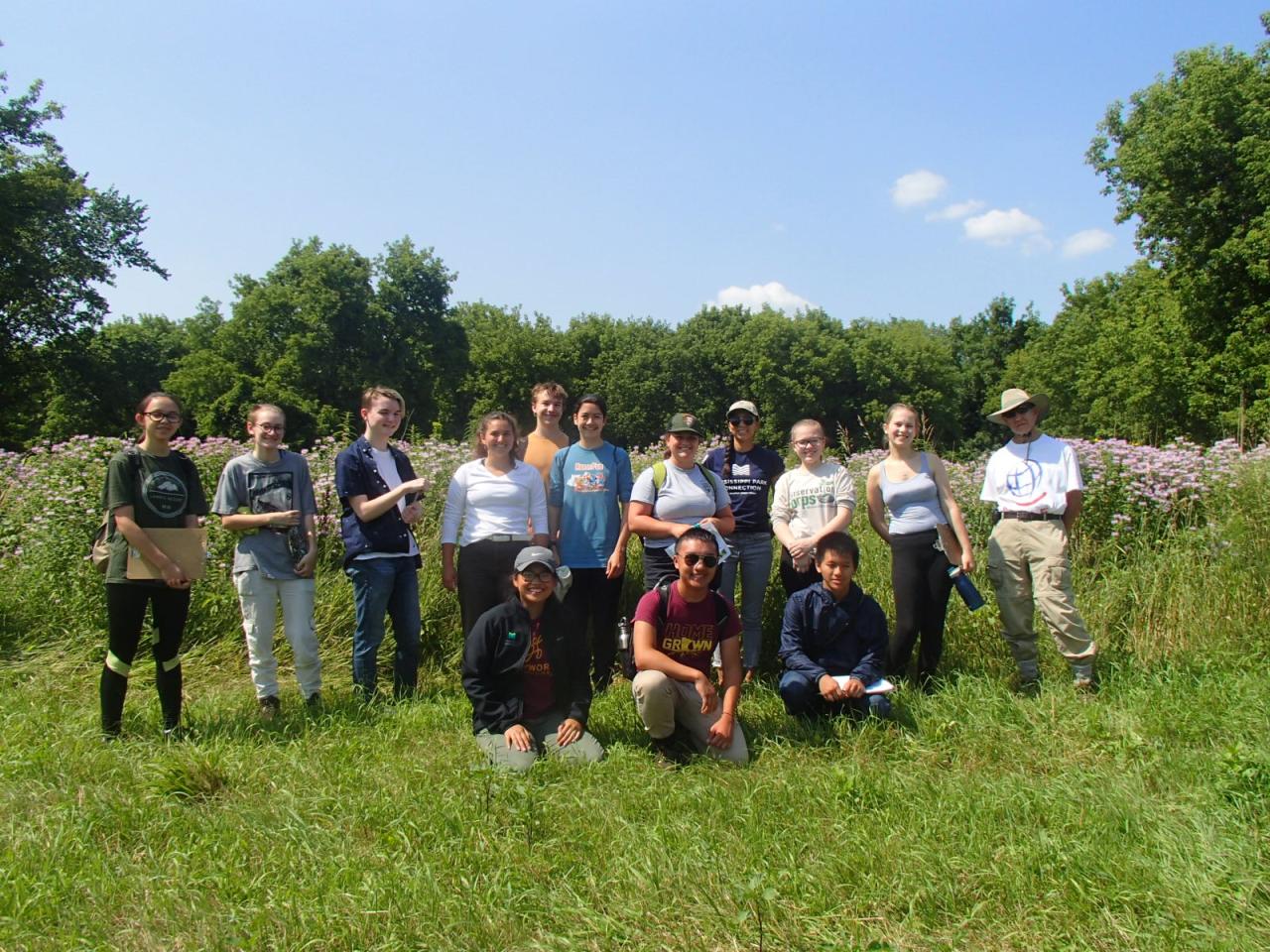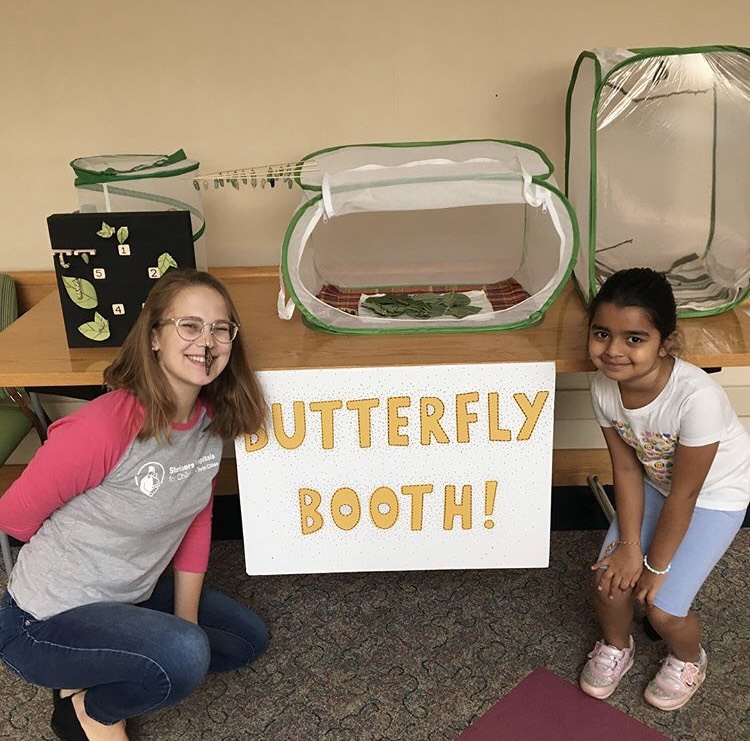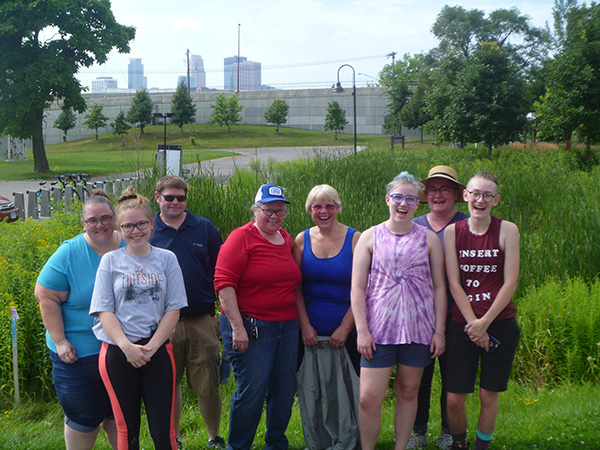The first Youth Empowerment Program's final projects

In 2019, we debuted our Youth Empowerment Program (now the Environmental Stewardship Institute), an 8-week summer program aiming to bridge the gap between passion and accessible experience for metro youth who care about our environment.
Together with our education program staff, 11 high school students explored environmental issues, increased job skills, met professionals in the environmental field and completed their own independent projects. These independent projects encouraged our students to deepen their understanding of an environmental issue in their community, as well as build research skills and make an impact.
On their final project presentation day, our office hosted monarch butterflies in mesh cages, jars of Mississippi and Minnesota river water, and even a baby painted turtle nestled in a yogurt container. We were a little blown away and wanted to share a glimpse into their excellent work. Here's a sampling.
Nora's butterfly booth

Nora combined her interest in environmental education with her vast collection of monarch eggs, caterpillars, chrysalises and butterflies. She brought her booth to local parks and talked to children at the Shriner's Hospital. With a handmade clay model of a monarch's life cycle and an online survey for booth visitors to give her feedback, Nora set up a sophisticated educational tool that we hope to see at more parks next summer!
Ayva's research project: Environmental Justice
Ayva wanted to know more about the dynamics of environmental issues in our community. She researched environmental justice and racism for her independent project, bringing it home to Northern Metals in Minneapolis. Her presentation included some fascinating resources and videos.
Kat and Shea's restoration event

Kat and Shea love volunteering and wanted the challenge of organizing an event. These two researched invasives, restoration and event organization, then rounded up volunteers and hosted a prairie restoration event at Sheridan Memorial Park in Minneapolis.
Isaiah's film project
Experienced in making documentaries, Isaiah wanted to lend his skills to FMR. He worked with FMR Communications Director sue rich to determine what type of footage would be helpful for video projects, and then got out in the field with our photographer and videographer Tom Reiter to capture film. Keep an eye out for Isaiah's work in upcoming FMR video projects!
Jay's awareness project: Deebo the painted turtle
Drawn to wildlife, Jay rescued a baby painted turtle with injuries and eye damage. Determined to protect the turtle from further harm, she researched its needs to take care of it, and also became aware of the habitat destruction and challenges facing turtles.
Here's the introductory video for what Jay hopes will be an online awareness campaign:
Naomi's article: Nutrient pollution as a global issue
Curious about the dead zone in the Gulf of Mexico, Naomi looked into the detrimental effects of excess nutrients in our water and wrote a quality article on the topic: "While nutrients are important to maintain healthy ecosystems, nutrients in excess fuels the growth of large algal blooms."
Chu-Yen's presentation: Aquatic invasive species and what we can do
Chu-Yen was interested in how invasives can affect our waterways. He put together this presentation outlining Minnesota's most impactful aquatic invasive plants and animals. Using info gathered from the Minnesota Department of Natural Resources, Chu-Yen shared the state response to invasives and a few tips for how individuals can help.
Mercutio's research paper: How do water quality and meteorology affect each other?
Like a true young scientist, Mercutio asked a complex question: What's the relationship between weather patterns and water quality? He explores how increasing temperatures and rain events contribute to a muddier, more polluted river. Here are Mercutio's six suggestions about how to prevent this:
- Keep paved and other impervious surfaces clean. Sweep grass clippings and rake leaves from the street and storm drain.
- Turn your downspout onto your lawn.
- Reduce fertilizer use.
- Wash vehicles on the lawn.
- Capture and infiltrate your runoff.
- Minimize use of road salt.
Learning from our students
Thanks to our Youth Empowerment Program students, we learned a lot this summer. And we're excited to do it again next year!
If you're interested in our education program, including the Youth Empowerment Program, please contact FMR Youth Coordinator Kate Clayton: education@fmr.org, 651.222.2193 x23.